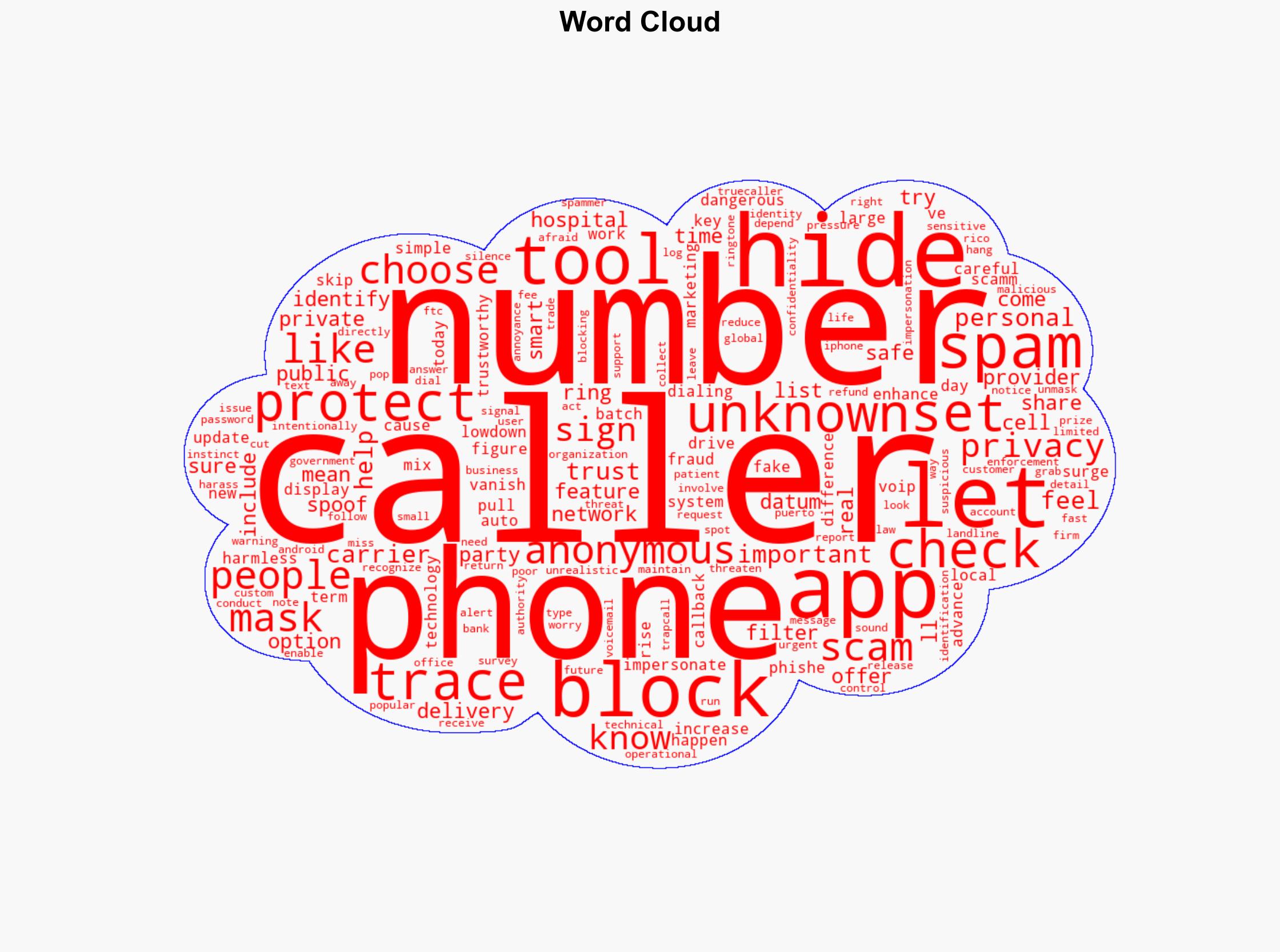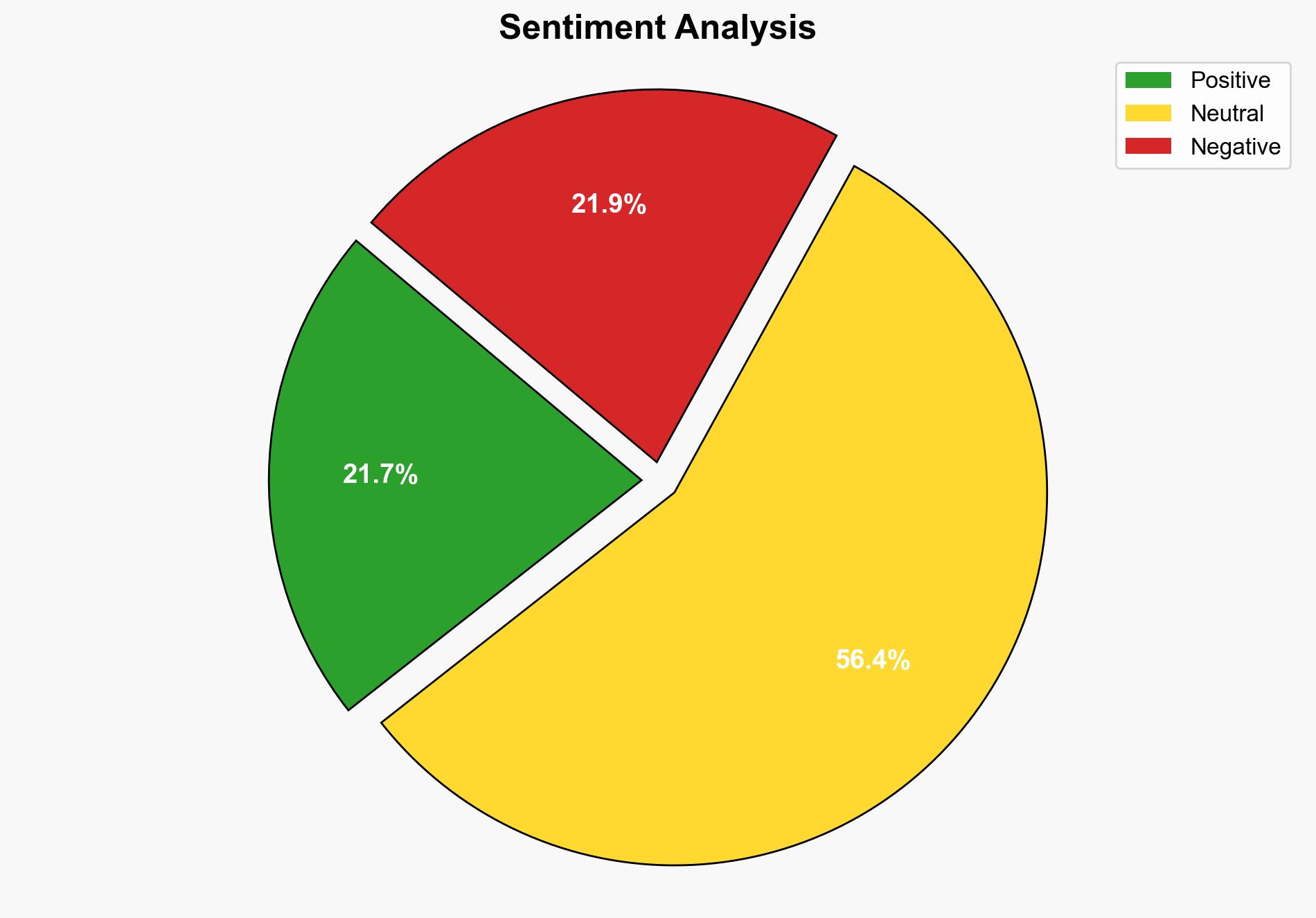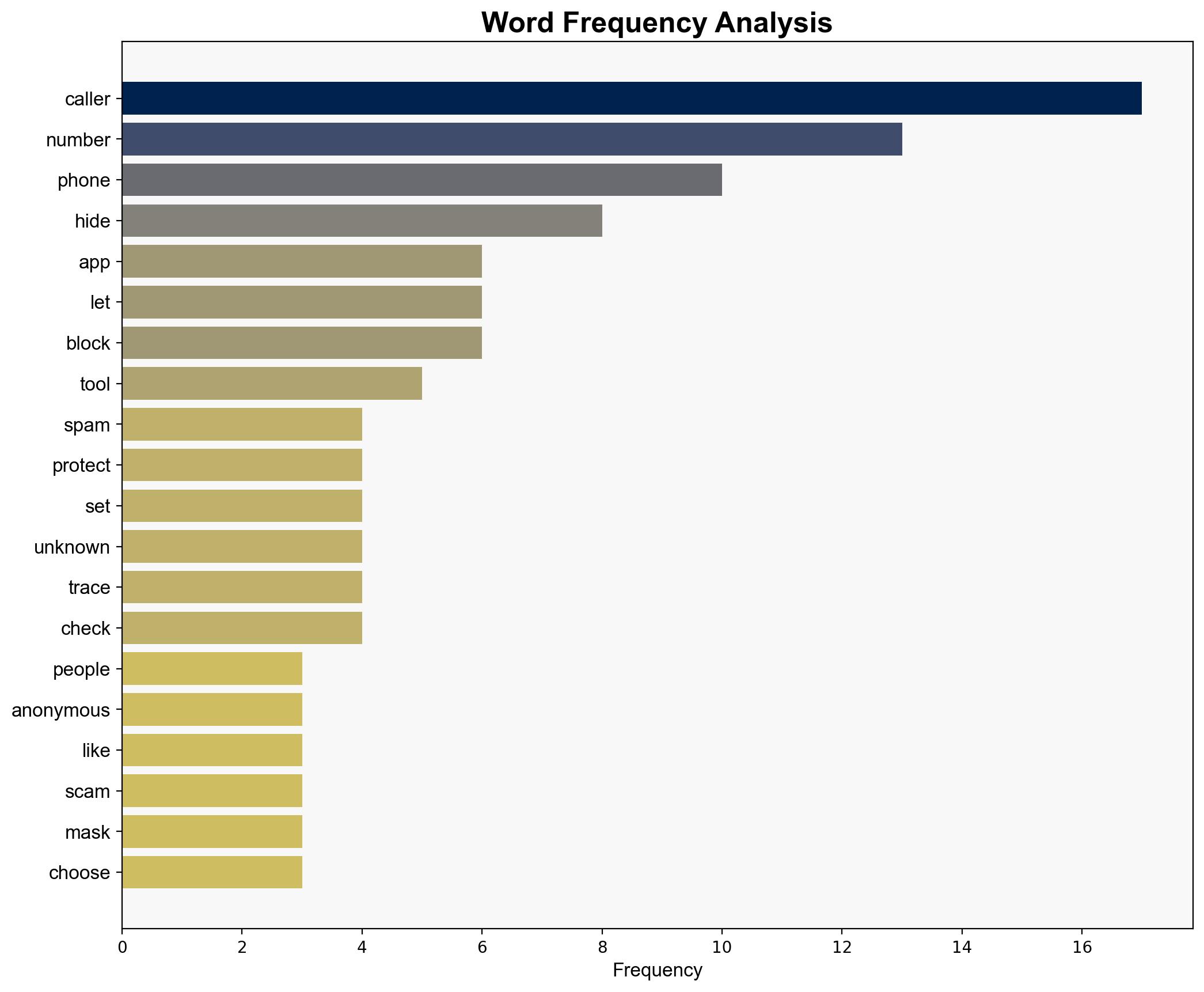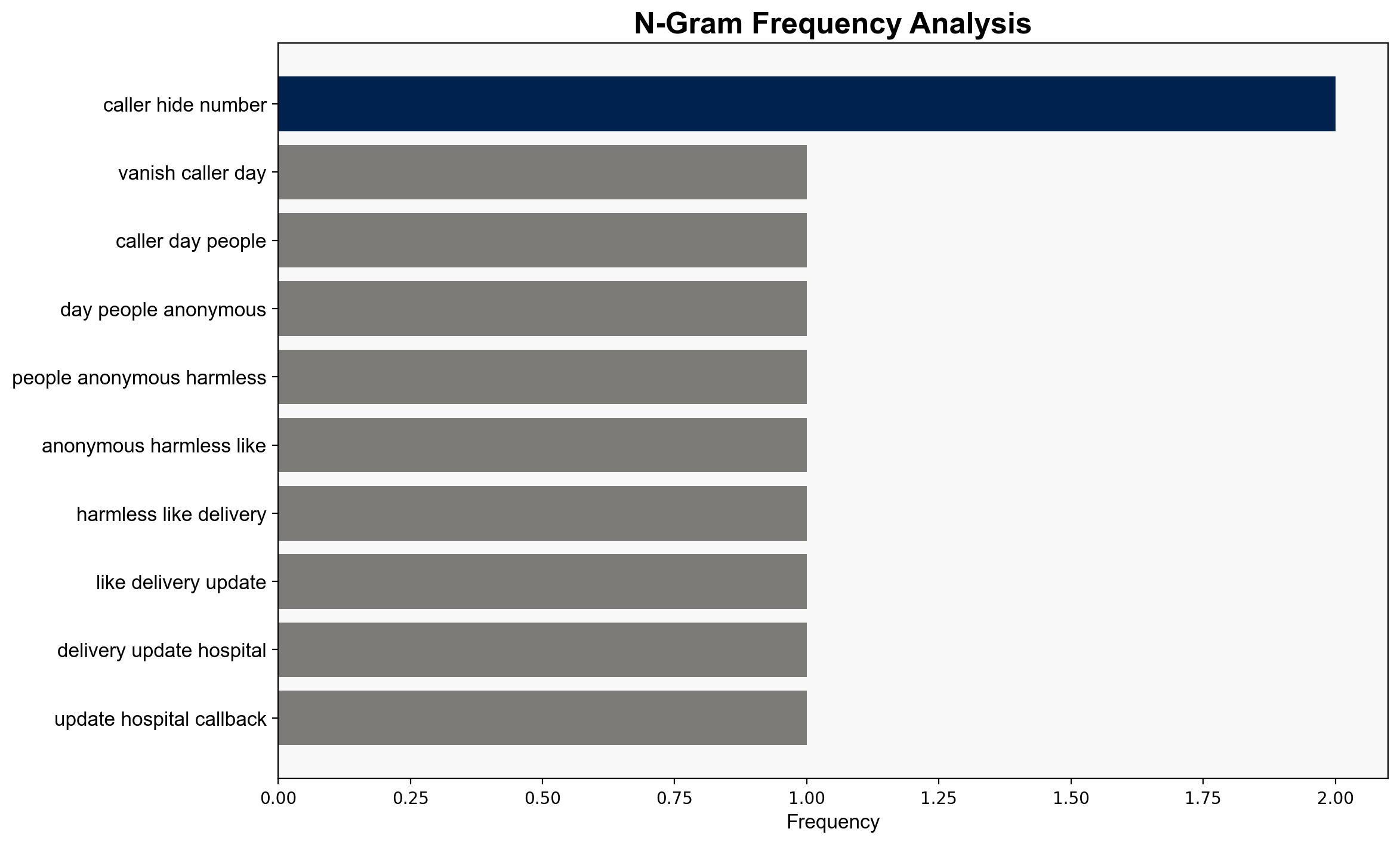No Caller ID Calls Are Back Heres How to Stay Safe and Identify Them – Android Headlines
Published on: 2025-10-22
Intelligence Report: No Caller ID Calls Are Back Heres How to Stay Safe and Identify Them – Android Headlines
1. BLUF (Bottom Line Up Front)
The resurgence of no caller ID calls, driven by advances in technology and marketing strategies, poses a significant cybersecurity threat. The most supported hypothesis is that these calls are primarily used for malicious purposes, such as scams and phishing, rather than benign reasons like privacy or operational confidentiality. Confidence level: Moderate. Recommended action includes enhancing public awareness and strengthening technological defenses against caller ID spoofing.
2. Competing Hypotheses
Hypothesis 1: The increase in no caller ID calls is primarily due to malicious activities, including scams and phishing attempts, leveraging advanced technology to bypass detection and exploit victims.
Hypothesis 2: The rise in anonymous calls is largely driven by legitimate needs for privacy and confidentiality, such as businesses conducting surveys or organizations protecting sensitive information.
Using Analysis of Competing Hypotheses (ACH) 2.0, Hypothesis 1 is better supported by the evidence, given the emphasis on scams and the use of technology to mask identities. The prevalence of urgent and threatening language in calls aligns more with fraudulent intent than legitimate privacy concerns.
3. Key Assumptions and Red Flags
Assumptions:
– Scammers have the technical capability to exploit caller ID spoofing effectively.
– Legitimate organizations have alternative methods for ensuring privacy without resorting to anonymous calls.
Red Flags:
– Lack of detailed data on the proportion of calls that are scams versus legitimate.
– Potential bias in assuming all anonymous calls are malicious without considering legitimate use cases.
4. Implications and Strategic Risks
The increase in no caller ID calls could lead to heightened public distrust in phone communications, impacting businesses and personal interactions. Economically, this could result in increased costs for fraud prevention and consumer protection. Cybersecurity risks include data breaches and identity theft. Psychologically, the stress and anxiety from frequent scam calls could have broader societal impacts.
5. Recommendations and Outlook
- Enhance public education campaigns on identifying and responding to scam calls.
- Encourage telecom providers to improve caller ID authentication technologies.
- Scenario Projections:
- Best Case: Implementation of robust caller ID verification reduces scam calls significantly.
- Worst Case: Scammers develop more sophisticated methods, outpacing current defenses.
- Most Likely: Continued rise in scam calls with gradual improvements in public awareness and technology.
6. Key Individuals and Entities
No specific individuals are mentioned in the source text. Entities involved include telecom providers, cybersecurity firms, and potentially law enforcement agencies.
7. Thematic Tags
national security threats, cybersecurity, consumer protection, telecommunications





